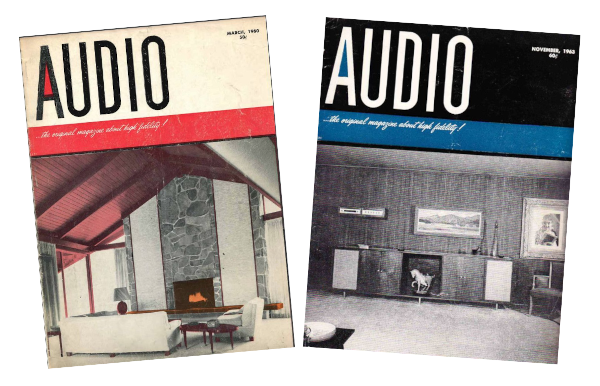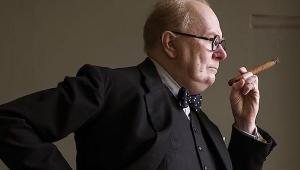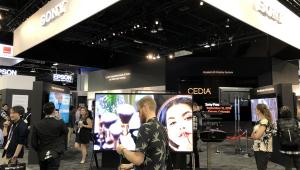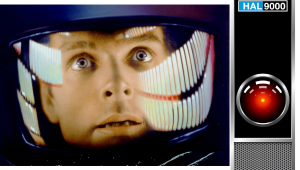Exploring the Early Days of Home Hi-Fi

Riffling through the issues was fascinating, and so far I've only looked closely at the first three or four months. A popular audio writer of the time, Edward Tatnall Canby, wrote a column each month called Audio ETC (ETC, get it?). In the January issue he spoke out about something called 3-channel stereo. It seems that some recordings were being marketed as 3-channel. In fact, there were recordings that had been rerecorded from three microphones onto 3-track recorders, and then mixed down to 2-channel for release to match the 2-channel limit of the playback gear of the time.
I'm no audio recording historian, but I'm certain that 1960 was still years removed from complex multichannel mixes derived from multiple microphones. Multiple microphones were often used, but controlling them was limited. The sophisticated mixing decks you find today, in even a modest recording studio, simply didn't exist. And full surround sound was limited to high-budget films and heard only in theaters.
Readers of the time must have been tolerant of long articles. In the February 1960 issue, Norman H. Crowhurst wrote a 7-page tome called Second Thoughts About Stereo. It included 49 listed references! He concluded, "This is suggested as a further avenue for work...to achieve more consistent improvement in stereophonic illusion by properly applied recording techniques." The same issue included part 1 of an article on output transformers by James Moir. It ran about 9 pages including a part 2 in the March 1960 issue.
That March issue's “New Products” page included an announcement of Quad's first electrostatic loudspeaker. Made in England, it was then distributed in the United States by Irving M. Fried. Older readers (but not necessarily 1960s older) might recognize that name. Irving M. "Bud" Fried was involved in loudspeaker distribution, and later his own Fried designs, for decades. I got to know him in the 1990s. He loved to talk about why his speakers were the very best. At a '90s CES booth he and Richard Shahinian had demo rooms. Richard loved to play classical music on his speakers, and never talked over it. Fried walked in, sat down, and started to chat with others in the room. Shahinian didn't say anything, but you could count the icicles hanging from the ceiling.
Some of the references here might suggest that Audio magazine (which was published for decades but is now long gone) was more than just a guide for hi-fi consumers. True enough. It combined in-depth technical articles with reviews of both audio equipment and music formats, though like all magazines its emphasis drifted back and forth depending on the editor.
There were music reviews as well. Classical, jazz, and light pop dominated. Count Basie, Cannonball Adderley, Dinah Shore, The Kingston Trio, The Limelighters, and Mahalia Jackson will be familiar to many even today, but other artists not so much. Rock, however, was virtually absent. Elvis was already on the scene, but the Beatles and Rolling Stones were still a few years into the future. The record releases were still heavily mono, but there were enough stereo LPs to confirm that the future would be in stereo.
One constant, of course, was the advertisements. But two aspects of them were very different than today. Most of them were in black and white (apart from covers, color in magazines was likely rare at the time), and many if not most ads also included the retail prices of the advertised products. The brand names listed here include companies still in business and others no longer operating. Some you'll recognize, but only a few readers will be familiar with others.
Tubes were virtually universal in 1960's electronics, with amplifier power ratings we'd consider anemic by today's standards. There was even an ad for a new RCA tube just the tube! Many of those tube amps and preamps were kits from the likes of Dynaco (including their PAS2 preamp for $59.95 or $100 assembled), Lafayette Radio (a preamp for $79.50, or $134.50 assembled), Eico, and Heathkit. The latter's lowball kit, at $30, was the SA-3 stereo integrated amp. Its specs were eye-watering in a negative way, at least by today's standards: 3 watts per channel ±1dB from 50cps to 20kc (cycles or kilocycles instead of Hz the latter hadn't yet come into common use), THD under 3% (!) from 60cps to 20kc, and IMD less than 2% at 3 watts. The ad claimed more than enough power for clear, room-filling sound! Heath also offered a tape recorder kit and, in later years, a color TV kit as well!
Other ads featured Harman Kardon Citation (kits), and non-kits from Fisher, H. H. Scott. Pioneer (a receiver offering the enormous output of 40Wpc and 45Wpc peak), Bogen, Pilot, Sansui, Acrosound, Sherwood, and Madison-Fielding. The speaker ads also encompassed names both recognizable or not to today's audiophiles. These include Acoustic Research (its AR 2a), KLH, Wharfedale (introducing the Model 60 that featured its sand-filled baffle to minimize vibration and resonances, at $105 each), Electro Voice, University, and Audax. In later months of that year other names turned up in the advertisements as well.
And I haven’t even touched on sources, including several tape decks (in addition to that kit version from Heathkit mentioned above), turntables (dominated by record changers for stacking those LPs high!) and also separate tonearms, three of which were advertised in those early issues at under $35, along with cartridges topping out at or near the same price.
If it appears that audio gear in 1960 was amazingly cheap (most of it made in the U.S. or Europe), don't overlook the effect of inflation over the years. You may have heard of inflation. In 1960, a good mid-level, white collar salary hovered around $10,000/year. Given that, those $35 tonearms should sell today for about $350, and that $100 Wharfedale loudspeaker for $1,000. But you can't find a separate tonearm today for $350, and a $2,000 pair of speakers isn't near the top of most audio manufacturers' offerings. I'm no economist, but inflation affects different industries in different ways. Audio today is a far bigger business than it was in 1960, and there are far more buyers willing to pay more for it.





























































